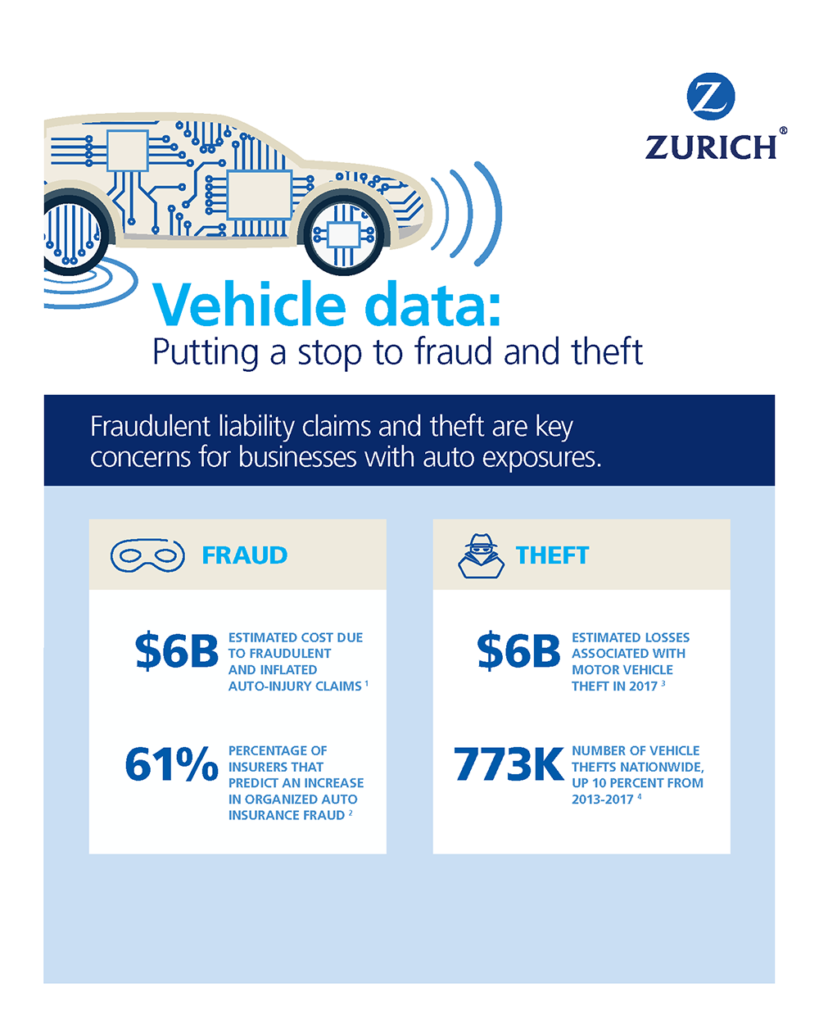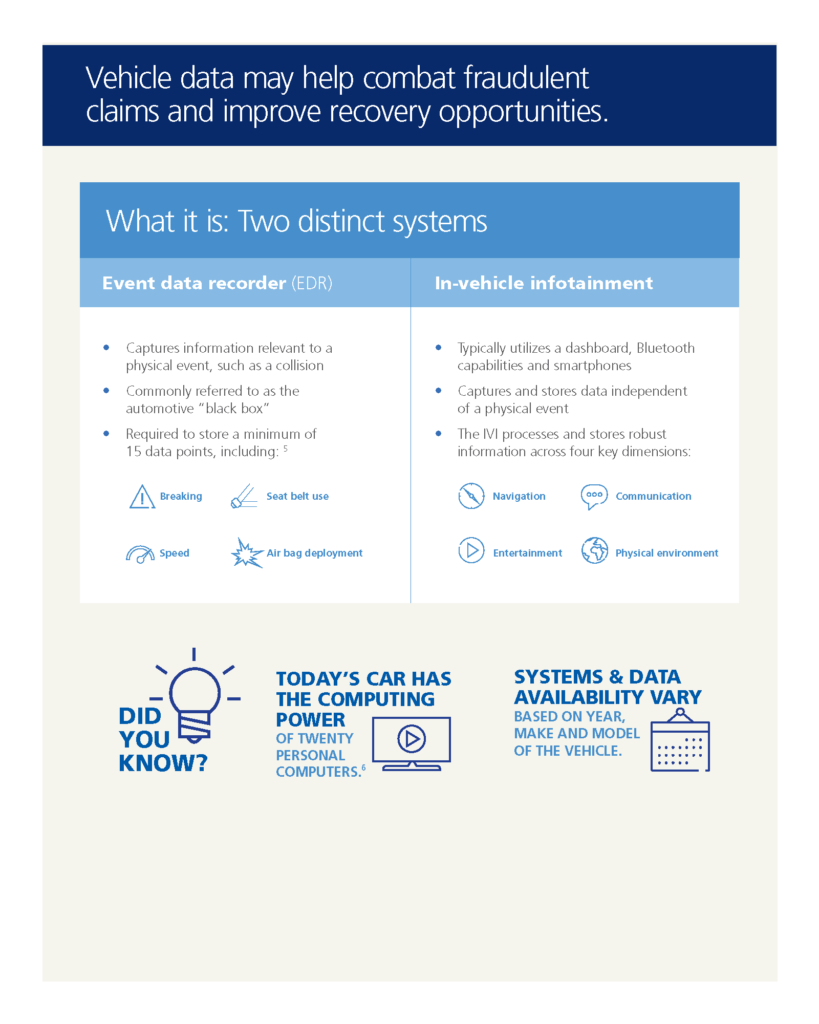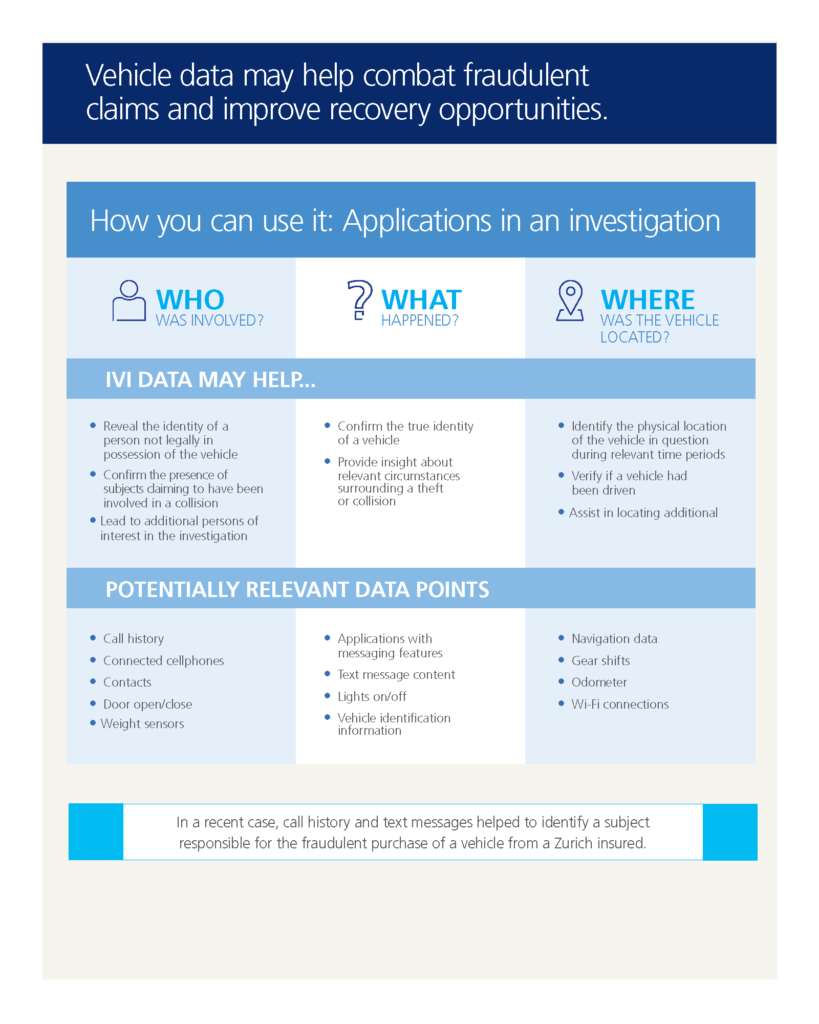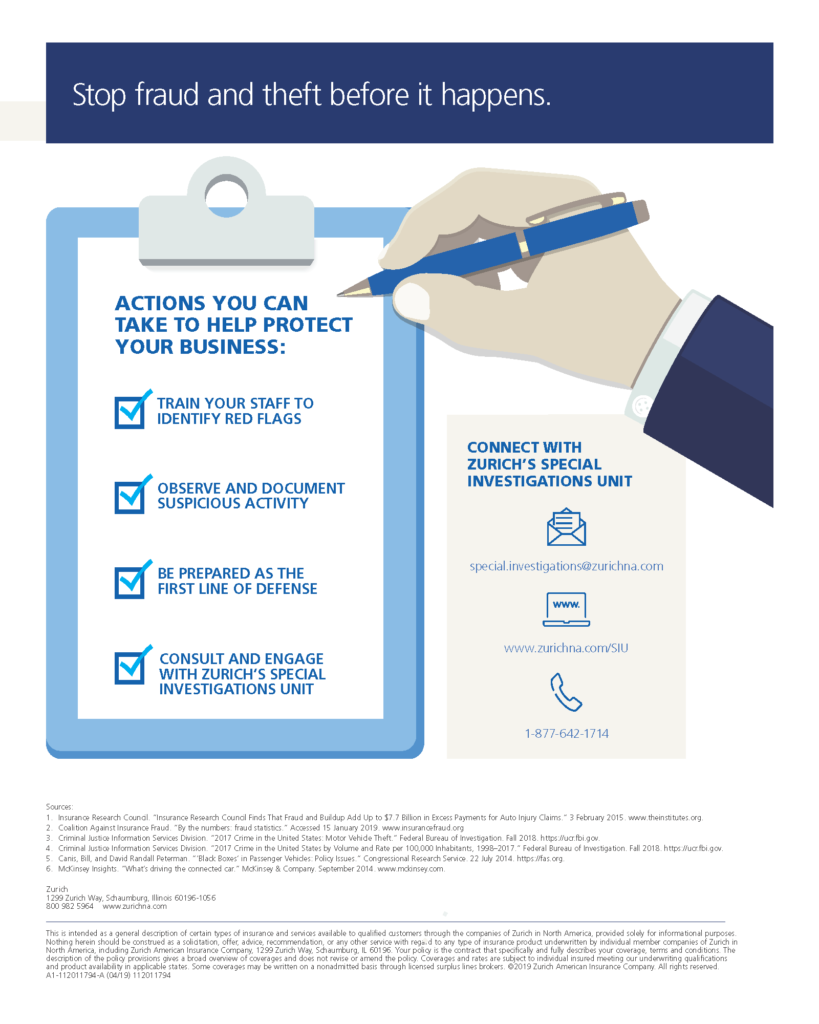Is your business vulnerable to auto fraud and theft?
Each year, our industry experiences losses of approximately $12 billion to auto fraud and theft, split down the middle: $6 billion in auto theft and another $6 billion in fraudulent or inflated auto injury claims. Even if your commercial clients own no vehicles in their businesses, they may still be vulnerable if their employees use their own vehicles for work.
There are options you can deploy now, to help mitigate your liability in case of an accident, auto fraud or theft. One is an event data recorder, the “black box” of autos. It captures and stores such data as seat belt use, how often and how hard brakes are used, speeds and airbag deployment. Business owners who have workers that drive constantly in their own vehicles may want to consider purchasing them and requiring their use, particularly if a certain driver seems to be accident-prone. A less expensive alternate would be tapping into the computer system of the worker’s vehicle when a mishap occurs. Many newer models have infotainment displays that capture and record data that can be used in case of an accident.
Learn more about each of these options and the data they capture in Zurich’s infographic below.
How you can help prevent auto fraud and theft
- Select good drivers. Conduct background checks prior to hiring, even if the job description only calls for occasional time behind the wheel. You can typically order an MVR online from your state DMV. Choose people with 1 point or less on their licenses. The MVR will show traffic violations, whether they have a valid driver’s license, what their license restrictions / endorsements are, and whether their license has been suspended or revoked.
- Monitor performance. Make it clear from the outset that you’ll be checking their MVRs on an ongoing basis. You may want to add GPS tracking to their vehicles which will enable them not just to track vehicles’ whereabouts and control malingering, but also monitor for speeding.
- Consider a monitoring service. As you probably know from experience, drivers don’t always self-report their tickets, accidents and DUI issues, so suggest that your clients use a monitoring service, such as SAMBA driver record monitoring, Driver’s Alert or Driving Dynamics, to automate their drivers’ monitoring program. These services routinely check for new violations, DUI or DWI convictions, license suspensions, revocations, and approaching license renewal dates. You’ll get a report each month and can take action, if necessary.
View Zurich’s infographic below to learn more ways to prevent auto fraud and theft.





![You are currently viewing Putting the brakes on auto fraud and theft [infographic]](https://www.arrowheadgrp.com/wp-content/uploads/2020/02/2.11-auto-theft-BLOG.png)